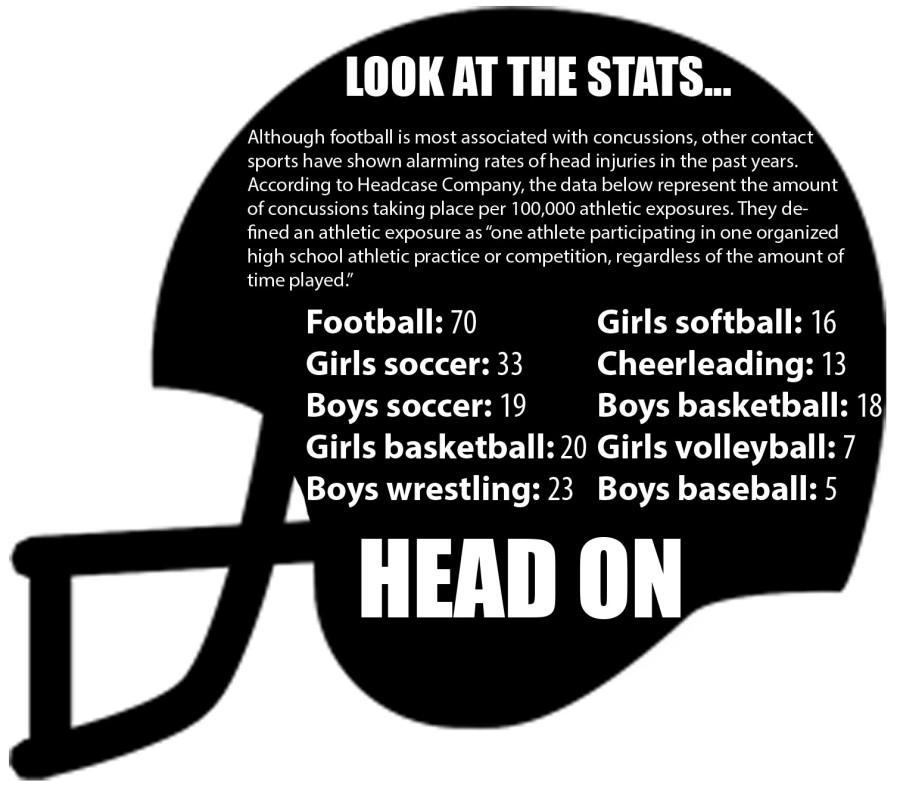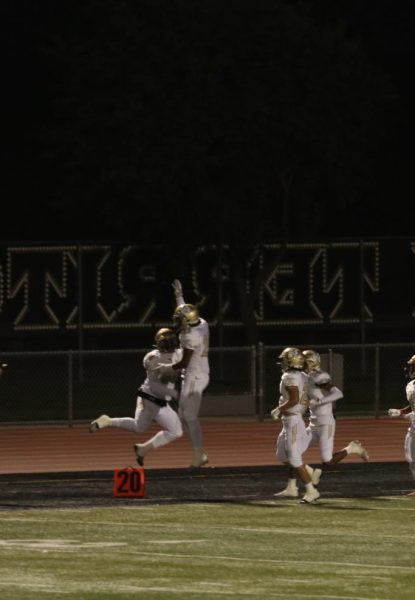SAFETY FIRST?
Coaches, trainer try to wrap their heads around issue of head injuries
One head-on tackle and it’s lights out.
But how do athletes react once they’re pulled out of the play, on the sideline and surrounded by physical trainers probing at their body?
Put me in coach. I’m fine.
Sports-related concussions have in recent years become a subject of investigation, and sports that aren’t conventionally associated with head injuries are now being targeted. The University of California, Irvine, has initiated a study regarding head injuries received in waterpolo, one sport that has little to no data on concussion injuries.
Water polo coach Marcus Sherman says his goalies wear compression helmets during practice but not for games since they aren’t currently allowed. “They’re trying to get that passed for everybody. I don’t get what the holdup is — it’s stupid.” The National Federation of State High School Associations has not yet approved helmets, so wearing them during official games is technically “illegal,” according to Sherman. Yet he’s still hopeful. “It’s going to have to happen,” he said. “It’s such a simple measure to help people.”
Amanda Munoz, the girls water polo goalie, said that she had a concussion her freshman year when a ball ricocheted off the goal post and hit her face. “That’s why (Sherman) got the helmets,” she said, “to prevent (concussions).” Munoz would like to see helmets regulated because “if you love the sport,” she says with helmets “you can still do it without worrying.”
However, athletic trainer Christine Bolthouse says that helmets are not a “guarantee” in protecting athletes from head injury. “A lot of times when people wear padding they are more prone (to injury) because they feel protected.” Instead, she advocates for more athletic trainers working full-time and covering all sports. “They have these nice fields, nice equipment,” she said, regardnig the funding allocated to sports. “If you’re going to have an athletic program, then safety should be the biggest concern.”
Bolthouse says when an athlete is suspected of being concussed, they are immediately removed from play and cannot return until a licensed healthcare physician had cleared them. She performs the SCAT3 (Sport Concussion Assessment Tool) protocol, which is series of questions to evaluate symptoms and the player’s cognitive and physical state, as well as a separate assessment to go “above and beyond,” she says.
Sherman, however, wishes athletes receive better care than the standard protocols taken. I think trainers are great and they’re fantastic,” he said, “but they’re not MD’s.” He also thinks there.
“It’s not a big hit (that hurts players),” Sherman said. “It’s all the little stuff.”
Sherman cites an accident last year where a player was hit by the ball, which the Irvine study says can be thrown as fast as 50 miles an hour in short distances. “I knew he was hurt because he was dazed,” he said. “If I asked him a question he would answer, but it would be delayed.” That player, now a graduate, couldn’t play again until he was cleared by a physician. Understanding this risk, Sherman is pushing for the regulation of helmets in water polo.
“What I and many coaches want is for all players to have them during games.”
Adrianna Jimenez became used to wearing headgear. Although she played soccer, Jimenez had so many concussion injuries that risking another would cost her health.
“I go out there and play my hardest whether I’m hurt or not,” Jimenez said. “I tried playing with a fractured ankle.” Not only that, Jimenez says she’s had four concussions since her freshman year. “My doctors all told me I should quit,” she said. “That’s where the headgear came in.” The headgear Jimenez wears has padding that straps all around her head
Chris Viri, the varsity soccer coach at the time, said he required his players to wear headgear if they have had one or multiple concussions. In soccer, headers are what pose the most risks to players’ health, so to limit concussions, Viri said he made sure to teach proper heading techniques.
“We always made sure we put safety first,” he said. “Her health and future health are always more important than a high school soccer game.”









